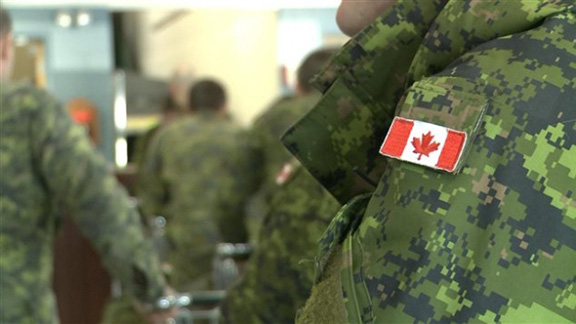

Medically unfit for deployment? We'll try to employ you elsewhere, says Canada's top general
After public and political criticism, Vance signals a cultural sea change for the military
By Murray Brewster, CBC News
Capt: under the universality of service rule, Forces members must be fit and ready to go into the field at a moment's notice. But Gen. Jonathan Vance, the chief of the defence staff, says it's time to change that approach. (Frédéric Pepin/Radio-Canada)
The Canadian military is redesigning itself to make room for troops who may not be "deployable," but are still "employable," the country's top general said.
The remarks by Gen. Jonathan Vance, the chief of the defence staff, represent a social and cultural sea change for an institution that has been accused of discarding injured members who, in some cases, have begged to continue serving.
Since the release of the Liberal government's new defence policy last spring, Vance has telegraphed that he wants to improve the career prospects of the wounded and that he was open to being more flexible.
Indeed, the often-touted policy itself stipulated that wounded troops would be allowed to remain in uniform "on a case-by-case basis."
But Vance went a step further in his comments at the end of a marathon news conference last week related to the government's suicide-prevention strategy.
"We are in the process of redesigning the force structure of the Armed Forces," he said, noting that post-traumatic stress should not be barrier to serving your country.
"Give someone purpose. And more importantly, remove the automatic-ness, if that's a word, of leaving the Armed Forces simply because you come forward and manifest with a mental health challenge. We have lots of people inside the Armed Forces who are — have — are suffering mental illness, and they carry on."
The universality of service rule
What must be recognized, he said, is "that there are parts of the Armed Forces that we could consider employable but not part of that deployability chain," he said.
The military has long operated under what's known as the universality of service rule, which requires members to be fit and ready to go into the field, at home or overseas, at a moment's notice.
Those who are injured, physically or mentally, are given three years to recover and return to full duty. If they're unable to do so, they are forced out under a medical release.
This became a significant issue in the aftermath of the Afghan war with as many 1,700 troops a year, many of them with post-traumatic stress, being released in a medical category.
The former Conservative government, which insisted in 2013 that troops were not being summarily hustled out the door, faced a barrage of criticism from disaffected soldiers and a public backlash.
Even in the face of a public and political backlash, the universality of service rule remained sacrosanct, and Vance's predecessors refused to budge.
'A broken system'
Preserving the standard is something the current defence chief said he intends to do, but building in flexibility is now a major priority.
"We must be deployable. We are an armed forces, after all," said Vance. "We have to be able to do what we've got to do. But we also have to think in terms of the value of the individual is not just deployability."
The comments were greeted cautiously by former soldiers, including one who has long campaigned for the military to find alternative positions for wounded combat troops.
Retired corporal Glen Kirkland, who survived a Taliban roadside bomb attack that killed three of his comrades, said he will wait to see how it unfolds.
At the moment, "it is really a broken system," he told CBC News. "And the government is so used to using Band-Aid fixes, it needs to be re-evaluated and start from scratch."
